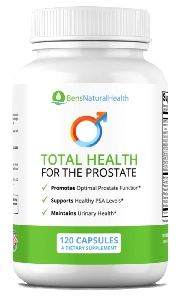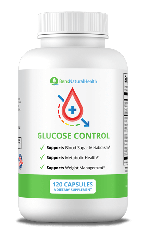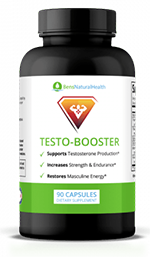- Q: What Is Prostatitis?
- Q: Who is at Risk of Developing Prostatitis?
- Q: What are the Symptoms of Prostatitis?
- Q: Can Prostatitis Cause Back Pain?
- Q: How Can You Resolve Prostatitis-Related Back Pain?
- Q: What Are the Prostatitis Treatments?
- Key Patient Questions on Prostatitis Lower Back Pain
- Conclusion
- Our Medical Review Process
- Our Editorial Guidelines
- Medical Disclaimer
- Source
When you start to understand medicine, you realize that everything isn’t always what it seems. We often encounter patients with uncommon signs and symptoms, sometimes in areas far from the actual problem. Because organs lack the same sensitivity as the skin and nerve terminals can be quite long, pain signals occasionally radiate or refer to unexpected spots.
But is prostatitis like that? Can the discomfort extend beyond the immediate prostate gland area?
We spoke with Dr. Parra, a renowned urologist specializing in prostate health, to discuss the connection between prostatitis and back pain. Dr. Parra provided a comprehensive collection of resources, evidence, and research for this article. Throughout our conversation, Dr. Parra shared insights into whether can prostatitis cause back pain and offered a closer look at both medical and natural therapies for managing symptoms.
A medical doctor has thoroughly reviewed all content here to ensure accuracy and reliability.
Get Your FREE PSA Lowering Diet Plan!
- Naturally lower PSA levels
- Reduce nighttime trips to the bathroom
- Enjoy better bladder control and urine flow
Q: What Is Prostatitis?
Dr. Parra answers: Prostatitis is the medical term for inflammation of the prostate gland. In most cases, this inflammation results from a bacterial infection. When bacteria enter the prostate, the immune system responds with an inflammatory process. The gland becomes swollen and retains fluid, irritating nearby nerve terminals and causing pain in the groin area.
People with prostatitis often also experience urinary tract problems such as urinary retention. Unlike benign prostatic hyperplasia (BPH), prostatitis is more common in younger men. It can stem from recurrent urinary tract infections or sexually transmitted diseases, which introduce bacteria into the prostate through small ducts connected to the urethra.
Sometimes prostatitis occurs without a bacterial trigger; these cases are called nonbacterial prostatitis. They can be quite challenging to manage and may lead to chronic pelvic pain syndrome.
Generally, prostatitis itself is not considered severe if addressed properly. Antibiotics often help treat bacterial cases. However, if the condition becomes difficult to resolve, it can impair a patient’s quality of life. As research shows, in rare instances, complications arise, such as a prostatic abscess or recurrent prostatitis.
Q: Who is at Risk of Developing Prostatitis?
Dr. Parra answers: The study indicates certain factors that place men at a higher risk of developing prostatitis:
- Recent or recurrent urinary tract infections: Intraprostatic reflux of infected urine can bring bacteria or debris into the prostate, sparking inflammation.
- Benign prostatic hyperplasia (BPH): An enlarged prostate alters the gland’s architecture and can lead to stasis (lack of drainage) in prostatic secretions, increasing infection risk.
- Sexually transmitted diseases: Gonorrhea, chlamydia, and similar infections can progress from urethritis into the prostate gland, especially in younger men.
- Unprotected sex: Men with multiple sexual partners or those who practice unprotected anal intercourse face a higher risk of prostatitis.
- Consumption of spicy foods, alcohol, and other irritants: These bad foods for prostatitis can inflame and irritate the urinary tract and exacerbate underlying prostate issues, potentially triggering flare-ups.
- Pelvic-area trauma: Repeated injuries to the pelvic region (for example, during long hours of cycling with a non-prostate-friendly seat) can induce inflammation.
Q: What are the Symptoms of Prostatitis?
Dr. Parra answers: Prostatitis presents in various types—acute bacterial, chronic bacterial, and chronic nonbacterial (often termed chronic pelvic pain syndrome). Each type comes with distinct but sometimes overlapping symptoms.
Acute Bacterial Prostatitis
As the research confirms, symptoms typically appear suddenly and with more severity:
- Fever and chills: Prostatitis is an acute bacterial infection, which is a very likely sign of temperature increases as a part of the inflammatory process. The body raises its temperature to fight infection, sometimes swinging to chills when the fever spikes.
- Muscle and joint pain: Accompanied by general weakness and malaise.
- Burning pain while urinating (dysuria): Also a common sign of urinary tract infections.
- Urinary frequency and urgency: Patients feel the urge to void more often. The volume of urine may stay the same as the frequency increases. This is very similar to urge urinary incontinence. When patients feel the need to void, it feels urgent and unavoidable.
- Sensation of incomplete voiding: Feeling that the bladder hasn’t fully emptied.
- Weak urinary stream and nocturia: Reduced flow and frequent nighttime urination due to prostate swelling.
- Abdominal pain: Usually near the suprapubic area, although some men also report back pain.
- Urethral discharge: Common in younger men, particularly when a sexually transmitted infection is involved.
Chronic Bacterial Prostatitis
The study confirms, that symptoms are less intense but more enduring:
- Intermittent dysuria: A burning sensation that comes and goes.
- Intermittent obstructive symptoms: Flare-ups of nocturia, incomplete voiding, frequent urination, and weak stream.
- Recurrent urinary tract infections: Especially notable in men, who otherwise have a low incidence of UTIs.
Chronic Pelvic Pain Syndrome (Nonbacterial Prostatitis)
According to the research, symptoms commonly include:
- Pelvic pain: Radiating to the lower abdomen, perineum, groin, scrotum, rectum, coccyx, or lower back.
- Pain upon ejaculation: Often intensified as inflammation worsens.
- Dysuria and obstructive symptoms: Similar to bacterial prostatitis but typically in flare-ups.
- Erectile dysfunction: Linked to chronic pelvic pain rather than purely psychological causes.
Q: Can Prostatitis Cause Back Pain?
Dr. Parra answers: Yes, it certainly can. Back pain is more frequently reported in acute bacterial prostatitis and chronic pelvic pain syndrome. Here’s how it happens:
- Acute Prostatitis: The inflamed gland sits near the rectum, so significant swelling can irritate nearby structures, including the rectal mucosa. This local inflammation can stimulate nerve endings that refer pain to the lower back. Patients might initially blame a spine issue, but their fever and urinary symptoms point toward the prostate.
- Chronic Pelvic Pain Syndrome (CPPS): This nonbacterial form can feature nerve-related discomfort in the pelvic area. The same nerve pathways carrying inflammation signals from the prostate may also send pain messages to the lower back.
Keep in mind that not all back pain in men with prostatitis is automatically due to the condition—spinal or muscular causes can also be at fault. A thorough evaluation is essential to confirm or rule out other potential issues.
Q: How Can You Resolve Prostatitis-Related Back Pain?
Dr. Parra answers: Prostatitis-induced back pain varies depending on whether it’s acute or chronic. In acute prostatitis, it often improves once the infection responds to antibiotics and anti-inflammatories, such as over-the-counter NSAIDs (ibuprofen and naproxen). As research confirms, severe or persistent pain might require more potent treatments, but most cases resolve within a few weeks as long as patients follow their prescribed medication regimen.
Chronic prostatitis—especially pelvic pain syndrome—can be more stubborn. There’s no definitive cure for CPPS. Symptoms can vanish for a time and then resurface in flare-ups. Doctors often try different therapies to manage or reduce pain. Strategies may involve:
- Long-term pain management: NSAIDs, alpha-blockers, or additional medications.
- Physical therapies: Pelvic floor relaxation techniques or specialized exercises.
- Lifestyle modifications: Avoiding triggers like spicy foods, alcohol, and stressful activities that intensify symptoms.
Q: What Are the Prostatitis Treatments?
Dr. Parra answers: Treatment depends on the specific type of prostatitis but usually includes some combination of the following options:
Medical
- Antibiotics: The study shows that it is essential for acute and chronic bacterial prostatitis. By eliminating the infection, inflammation often subsides.
- Non-steroidal anti-inflammatory drugs (NSAIDs): Helpful for pain control. Over-the-counter options like ibuprofen often suffice.
- Alpha-blockers: Promote smoother urine flow by relaxing urethral smooth muscles.
- Stool softeners: Beneficial if constipation puts extra pressure on the prostate.
Natural Supplements
- Turmeric: Boasts anti-inflammatory and antibacterial properties. According to the research, it supports the immune system and can ease inflammatory responses in the prostate.
- Saw Palmetto: Contains antioxidants (flavonoids) and offers anti-inflammatory benefits. The study confirms that it can be useful for both prostatitis and BPH.
- Quercetin: Known to reduce inflammation in the prostate, aiding symptom relief and potentially prolonging periods without prostate flare-ups.
As the research indicates, these supplements work best when combined with standard medical care, not as replacements.
Lifestyle
- Avoid prolonged or intense cycling unless you use a prostate-friendly seat.
- Limit spicy food and alcohol to prevent irritating the urinary tract.
- Practice safe sex to reduce your risk of STDs linked to prostatitis.
- Use heating pads or take warm baths to ease pelvic discomfort.
- Adopt a healthier diet with less sugar and more fresh, unprocessed foods.
- Stay active and hydrated, incorporating light exercise and plenty of fluids.
- Engage in pelvic floor physical therapy if recommended, to strengthen and relax key muscle groups in the pelvic region.
Key Patient Questions on Prostatitis Lower Back Pain
Q: Is there a difference between muscular back pain and nerve-related back pain caused by prostatitis?
Dr. Parra answers: Yes, muscular back pain and nerve-related back pain have different etiology, and the symptoms may vary widely. Muscular back pain is usually linked to muscle tension maintained in the muscles that attach to and around the spine, namely the iliopsoas, quadratus lumborum, gluteals, and multifidus muscles. Muscle tension in this area may result from psychological stress, sitting or standing for long periods, trauma in the lower back area, poor posture, or abnormalities in the anatomy of the spine or muscular structures.
In contrast, nerve-related pain is a more complex problem that involves pinching a nerve, which triggers pain symptoms throughout the area this nerve reaches, according to its anatomy. Nerve-related pain feels different from muscular pain as it usually radiates to other areas, such as the thigh and the legs. It usually includes an electric or burning sensation that runs along the affected nerve.
A study published in Nature Reviews Urology further developed the topic, enumerating different types of nerve-related pain triggered by prostatitis: nociceptive pain, inflammatory pain, neuropathic pain, and dysfunctional pain. Nociceptive pain starts when nerve fibers interact with different chemical or mechanical signs. Inflammatory pain happens when nerves become hypersensitive due to inflammatory mediators. Neuropathic pain is mainly triggered by a nerve injury, as mentioned above. Dysfunctional pain is still poorly understood, and it is behind many chronic pain symptoms, such as in fibromyalgia and chronic pelvic pain syndrome.
Q: Could certain exercises or stretches unintentionally aggravate prostatitis-related back pain?
Dr. Parra answers: In their article about chronic prostatitis and exercise, published by Harvard Medical School, the authors describe a variety of exercises we can consider during and after prostatitis treatments. They also explain that patients should avoid exercises that put a strain on the pelvic floor, such as bicycle riding. It is also important to avoid overexertion, as training too hard can trigger unintended tension in the core muscles and pelvic floor, aggravating prostatitis pain and prostatitis-related back pain.
After bicycle riding, gymnastics is the second most common activity associated with pelvic floor problems. Patients with chronic pelvic floor pain may need to avoid overstretching their leg muscles, which is a standard part of many gymnastic routines and may aggravate their prostate-related symptoms. Intense core exercises can also put pressure on the abdomen, stress the pelvic floor, and trigger pelvic pain and prostatitis-like symptoms. Thus, many authors recommend avoiding prolonged or very intense sessions of crunches and squats.
Q: Can mental health factors or stress trigger flare-ups of prostatitis symptoms that cause back pain?
Dr. Parra answers: Yes. Psychological factors, such as stress and anxiety, can worsen both back pain and chronic prostatitis/chronic pelvic pain syndrome. A recent study published in the Scandinavian Journal of Pain evaluated the prevalence of stress, anxiety, and depression in a cohort of males with chronic pelvic pain syndrome. They found that men with chronic pain symptoms are more likely to have catastrophizing thoughts, anxiety, and sexual dysfunction associated with psychosocial triggers, such as premature ejaculation. Moreover, men with more severe symptoms reported more intense catastrophizing thoughts, anxiety, and premature ejaculation episodes.
Another article published in Sexual Medicine Reviews explains the most likely mechanisms behind flare-up of prostatitis symptoms in patients with mental health factors. First, stress activates a fight-or-flight response, which causes muscle tension as a primitive response to survive in a hostile environment. This muscle tension may aggravate the existing pelvic floor muscle dysfunction and prompt lower back pain in predisposed patients.
Chronic stress can also sensitize our nervous system, making the brain more responsive to pain signals and amplifying them further. Thus, people under stress are more likely to have a lower pain threshold and experience symptoms even with minor stimuli. It is also likely that stress affects the coordination between the diaphragm and the pelvic floor muscles during breathing, placing an additional strain on the pelvic floor and accessory breathing muscles and leading to groin and lower back pain.
Q: How do hormonal changes or conditions, like low testosterone, impact prostatitis and subsequent back pain?
Dr. Parra answers: Hormonal problems are a common comorbidity in patients with prostatitis, especially in seniors. It doesn’t trigger prostatitis or back pain by itself but can play a significant role as a risk factor.
A study published in The Journal of Sexual Medicine describes research using data from over 8,000 men in their 40s and 50s. The authors measured their testosterone levels and administered a standardized test to assess the presence of chronic prostatitis symptoms. They reported that patients with lower testosterone levels have a higher chance of experiencing chronic prostatitis symptoms, even if they are not tagged as chronic bacterial prostatitis. Thus, hormonal conditions, such as low testosterone, can impact prostatitis and subsequent back pain.
Another study shows one likely reason, which is linked to the testosterone-to-estrogen ratio. Male patients with an altered testosterone-to-estrogen ratio have a higher concentration of inflammatory markers in their prostate tissue, and the cells are more likely to undergo apoptosis and trigger chronic inflammation. In contrast, normal testosterone levels appear to protect the prostate from chronic inflammation and may reduce pain symptoms in patients with chronic prostatitis.
It is also essential to highlight that very low testosterone levels in seniors can be linked to weakened bone tissue, similar to women during their menopause. Men can also have osteoporosis due to hypogonadism, which may contribute to lower back pain through a different mechanism than prostatitis.
Q: Should I seek a urologist, a chiropractor, or both if I have chronic prostatitis and persistent back pain?
Dr. Parra answers: Chronic prostatitis and persistent back pain are sometimes separate entities, but a urologist may help you find the most appropriate treatment if they are linked. However, most studies and literature reviews recommend a multi-modal treatment that includes different approaches and specialists to accelerate recovery in patients with chronic prostatitis/chronic pelvic pain syndrome.
A urologist can help you find the most appropriate treatment for chronic pelvic pain syndrome, and they will also address any neuropathic implications that may affect your lower back. A chiropractor, traumatologist, or physical therapist can also help by finding structural factors on your spine that may contribute to the symptoms, such as muscle tension, posture problems, spinal alignment issues, muscle asymmetry, or a degenerative condition in the spine.
As an initial approach, you can visit a urologist, who may decide to recommend another specialist in case you need a multi-disciplinary treatment. However, as a patient, you’re always free to ask for a second opinion from another specialist, who may provide additional insight into your comorbidities and help you recover from prostatitis symptoms.
Conclusion
Prostatitis takes several forms—acute bacterial, chronic bacterial, nonbacterial, and, in some cases, asymptomatic inflammatory prostatitis. Among these, back pain tends to appear more commonly in acute bacterial prostatitis and chronic pelvic pain syndrome. If you’re wondering, can prostatitis cause back pain?—the answer is yes, though the hallmark discomfort usually centers on the perineum, groin, lower abdomen, or other nearby areas.
Typical accompanying symptoms include painful urination, sexual dysfunction, and various urinary changes also seen in early prostate concerns. If you experience back pain and suspect prostatitis, proper diagnosis is crucial. Consult a healthcare provider for an evaluation to confirm the source of the pain and rule out other spinal or musculoskeletal problems. With the right treatment plan—whether antibiotics, anti-inflammatories, or lifestyle changes—prostatitis-related back pain can be managed, improving your overall quality of life.
Our Medical Review Process
At Ben’s Natural Health, we prioritize transparency, accuracy, and scientific integrity. Every piece of content is developed by medical professionals and undergoes a thorough review every 12 to 24 months. This meticulous process ensures our information remains current, precise, and backed by credible, evidence-based research. We exclusively cite peer-reviewed studies from reputable medical journals, providing full citations and direct links to enhance trust and confidence. Learn more about our medical review process and research standards.
Our Editorial Guidelines
For over 25 years, Ben’s Natural Health has been a trusted source of scientifically accurate information on natural health. Our editorial guidelines uphold the quality and integrity of every article we publish. Content is created by qualified professionals—including doctors, dietitians, nutritionists, fitness experts, and surgeons—and undergoes independent quality checks. We promote transparency by clearly displaying contributor credentials and biographies at the beginning of each article. Read our editorial guidelines to understand how we ensure accuracy and reliability in our content.
Medical Disclaimer
The information provided on this blog is for educational purposes only and should not replace professional medical advice, diagnosis, or treatment. While our content is reviewed and authored by licensed medical professionals, it may not address your specific health concerns. Always consult a physician or qualified healthcare provider before making any medical decisions. Never disregard or delay seeking professional advice based on the information found here. Your use of this blog and its content is entirely at your own risk.







